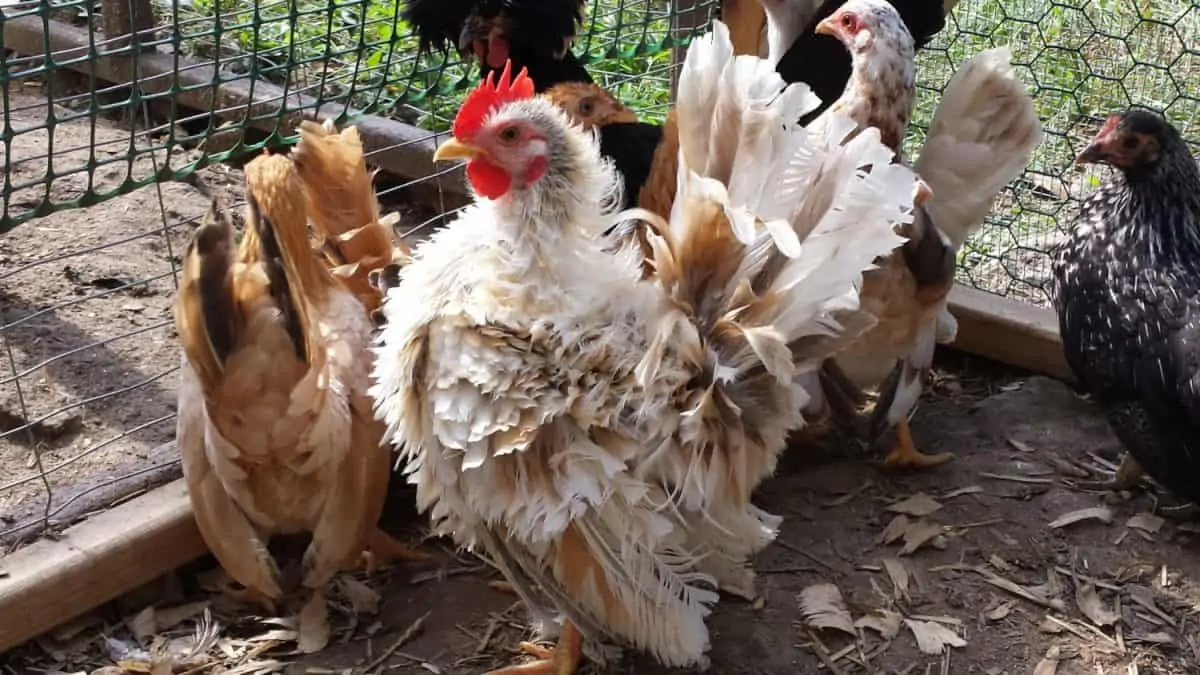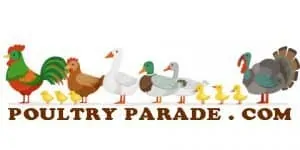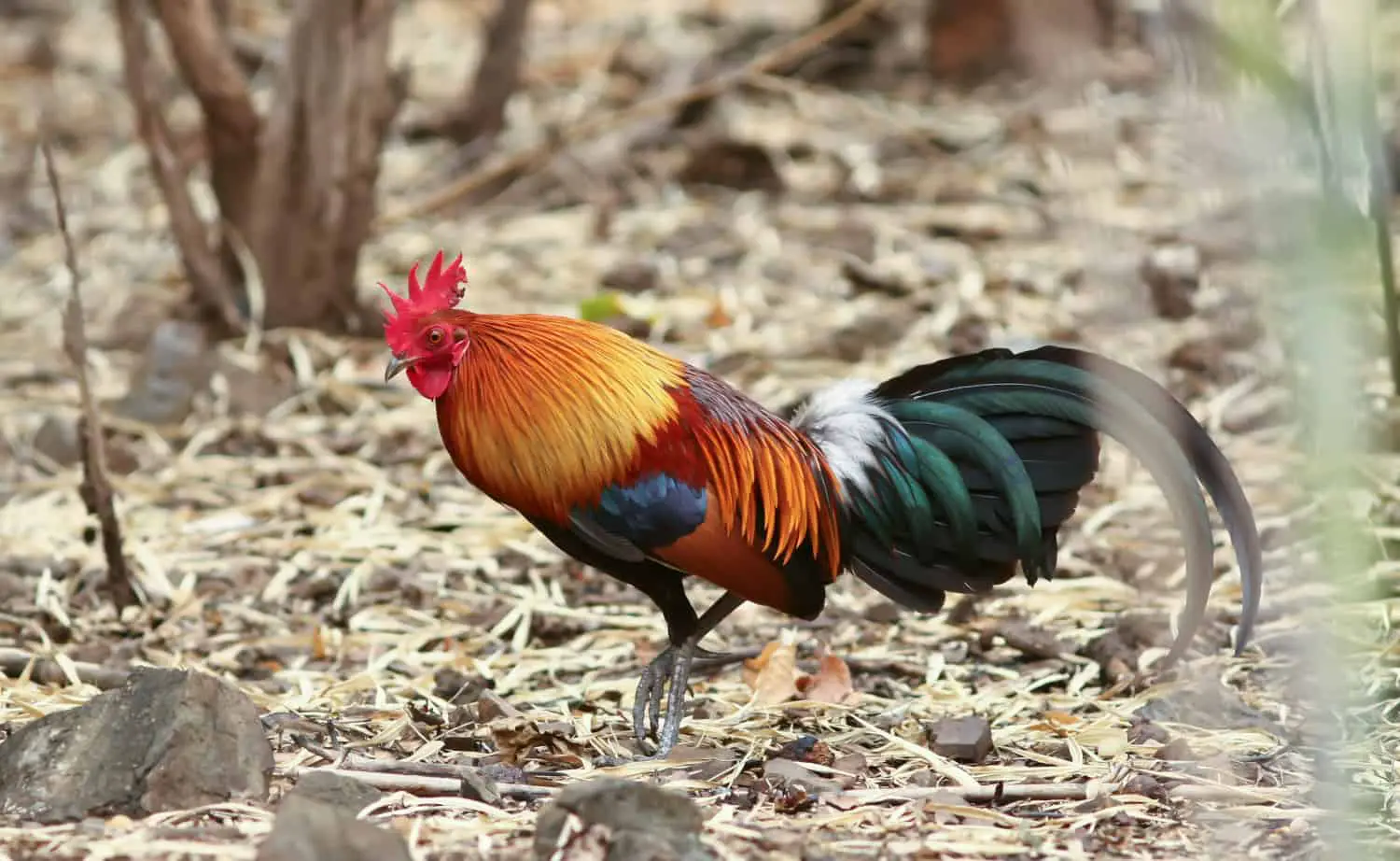Chickens. They are among the most ubiquitous animals on earth, with over 25 billion in existence and a population that continues to grow. But what is the story behind these birds? What did they evolve from? Are chickens man-made animals? Is chicken a hybrid animal?
In this blog post, we will answer all of those questions while also exploring what people mean when they talk about “hybrid chickens.”
Table of Contents
Are Chickens Hybrid Animals?
Chickens are not hybrid animals. A hybrid animal is the offspring of two different species or subspecies, and chickens originate primarily from one ancestor: the Red Jungle Fowl (Gallus gallus).
The Grey Junglefowl, Green Junglefowl, and Ceylon Junglefowl have contributed some genetic material to the gene pool of the chicken, which is evidence of interbreeding, but chickens are not considered hybrid animals.
Although it is slightly more complicated than that because hybridization does occur between different chicken breeds. Among chicken keepers, a “hybrid chicken” is a term used for cross-breeding pure breeds such as a Rhode Island Red/Araucana cross or a Barred Rock/Silver Laced Wyandotte mix.
And in common usage, the “hybrid chickens” specifically refers to certain industrial breeds, such as ISA Brown and Cornish Cross, which are bred to be efficient egg-layers and meat chickens, respectively. These breeds are called hybrids because every new generation was created by crossing two other breeds rather than coming from a continued line of the same breed.
Take the ISA Brown, which is a mix of Rhode Island Reds and Rhode Island Whites. If an ISA Brown hen and rooster mate, their offspring will no longer be considered hybrids or true ISA Brown hens.
What Is a Chicken Breed?
A chicken breed is a group of chickens that share certain genetic traits that distinguish them from other chickens, such as size, color, egg production, temperament, etc. Purebred chickens are individuals within a breed that have not been mixed with other breeds for many generations. Hybrid chickens are created by crossing different breeds to produce a chicken with the desired traits.
Are Chickens Man-made Animals?
Most chicken breeds are man-made through selective breeding over thousands of years. The original Red Jungle Fowl was the result of natural selection, but most modern breeds were created by humans.
However, some breeds are not entirely man-made because selection can occur through natural selection. This does not happen very often in highly managed domesticated animals, but researchers have found that some African chickens have naturally adapted to better manage “high altitude, disease resistance, poor nutrition, oxidative and heat stresses”.
What Did the Chicken Evolve From?
As mentioned, chickens evolved from the Red Jungle Fowl. This was the first chicken to be domesticated, and they still exist to this day. They are usually considered a class not much different from the many of the other breeds we have today.
The Red Jungle Fowl, like many other animals on this planet, originated in Asia. More specifically, they are believed to have been domesticated by people in the jungles of Southeast Asia. It’s not yet clear exactly where this happened or how it came about, but theory suggests they have first been domesticated about 8,000 years ago.
Over the following millennia, the chicken population dispersed around the globe: first to India and later brought to Africa and Europe. European settlers introduced many well-known European chicken breeds to the United States, but there is some evidence to suggest that an earlier breed had already been brought to the Americas through migration from Asia.
Why Are There so Many Different Breeds of Chickens?
There are hundreds of different chicken breeds all over the world – from the large Jersy Giants to the down-covered Silkies and the cute tiny Seramas. Whatever you want, there is a chicken for you.

There are many reasons why there are so many different chicken breeds. Some reasons include:
- Different environments and climates need specific types of chicken to survive and thrive.
- Farmers want to produce the most amount of food with little work and expense, which results in selective breeding of various egg-layers and meat chickens.
- Different cultures have different tastes.
- Isolated societies have been developing their own breeds.
All of these factors play a role in the great diversity among chickens. And since this has been happening for over eight millennia, there have been plenty of opportunities for variations to accumulate in the gene pool.
Before you buy your first flock, it’s important to do some research on the breeds that are best suited for your needs and your preferences. If you’re buying from a hatchery, they can help guide your decision as to which breeds are best for the climate where you live and what sort of egg production or meat that suits your needs.
In Summary
The chicken is not a hybrid animal, but there are hybrids of different chicken breeds.
There is a great variation in chicken genetics thanks to them having been very popular farm animals all over the world for about 8000 years. They have been used as an egg-laying and meat source since ancient times because they reproduce quickly, can be housed indoors or outdoors, and eat almost anything you give them.
As chickens continue to evolve through selective breeding programs that focus on traits like increased production rates, disease resistance, etc., it’s possible we’ll see more “hybrid” types arise from these various genetic combinations.


